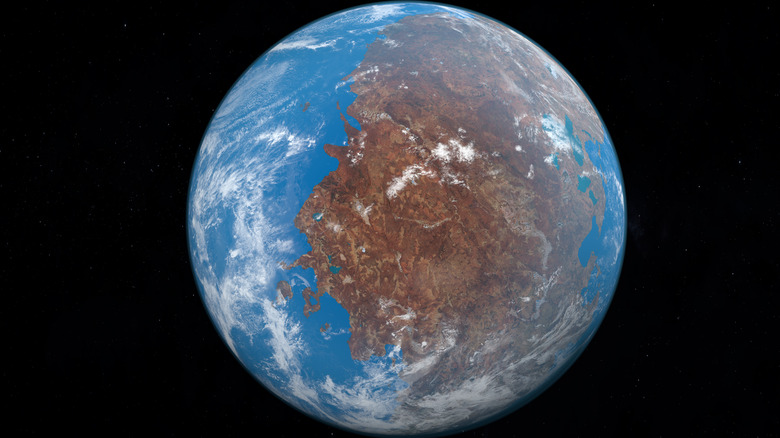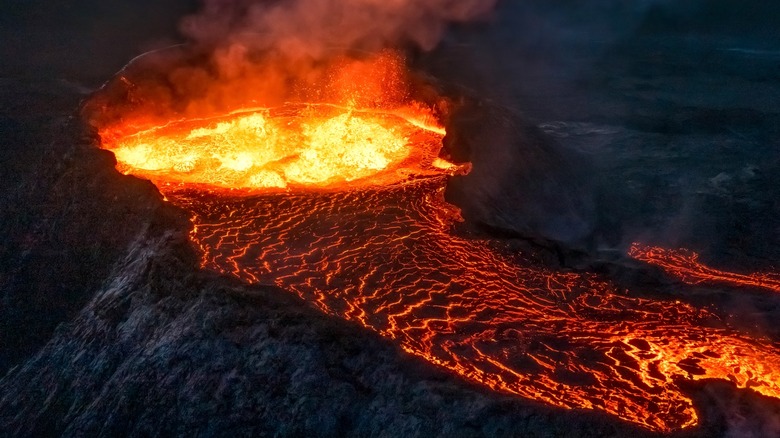Why A Future Supercontinent Could Spell Doom For Mammals (Including Humans)
Here's a fun fact: According to the United States Geological Survey, every single continent on the planet was once a single, comprehensive landmass known as Pangea. Pangea existed as it did for about 165 million years, during the Triassic Period when dinosaurs were in charge, before shifts in the Earth's tectonic plates gradually broke it up and all the continents we know drifted and settled into their current spots. Of course, continental drift is still very much a thing, it just happens so slowly that it's effectively imperceptible to humanity. At some point, in the very, very distant future, all of the continents may rejoin, though unlike the age of the dinosaurs, it may be substantially less pleasant for every living thing on the entire planet.
According to a recent study from the University of Bristol published in Nature Geoscience, in approximately 250 million years, the continents of the world will drift back together and recombine into a new supercontinent that the researchers have dubbed "Pangea Ultima." However, due to projected shifts in the Earth's climate by then, it is believed that Pangea Ultima could be completely uninhabitable by any and all land-based mammals.
The intense heat of Pangea Ultima
To determine the conditions of this hypothetical supercontinent, the researchers ran a simulation through a supercomputer to forecast future changes in temperature and humidity. Based on their projections, in 250 million years, the recombining of the world's continents will consolidate heat from underwater volcanic vents directly under Pangea Ultima. Every continent has these vents, but because they're all bordered by the ocean, some of the heat dissipates. If it's all one landmass, though, all that heat is staying right where it is, either heating from below or being pushed up onto land by tectonic activity. Additionally, the increased volcanic activity would result in a higher concentration of carbon dioxide in the air, trapping ultraviolet radiation from the sun, of which there would be substantially more as the sun gets older.
All in all, we're looking at a near-constant dry heat of well over 104 degrees Fahrenheit. While some heat-resistant critters may be able to survive, and the denizens of the ocean can still live in the dark, colder depths, for the vast majority of landlocked life on Earth, it's lights out. That also includes humanity, if we're still around that far in the future, though in all likelihood, we'll have either evolved in something entirely different, gone extinct from natural changes in the environment, or in the best-case scenario, left the planet and become a spacefaring species.

